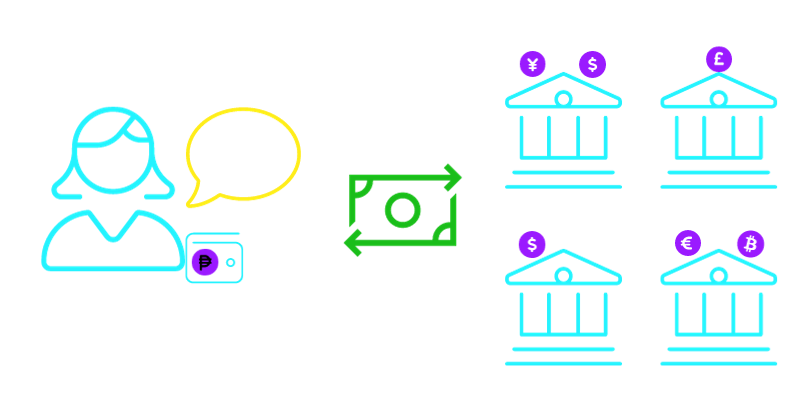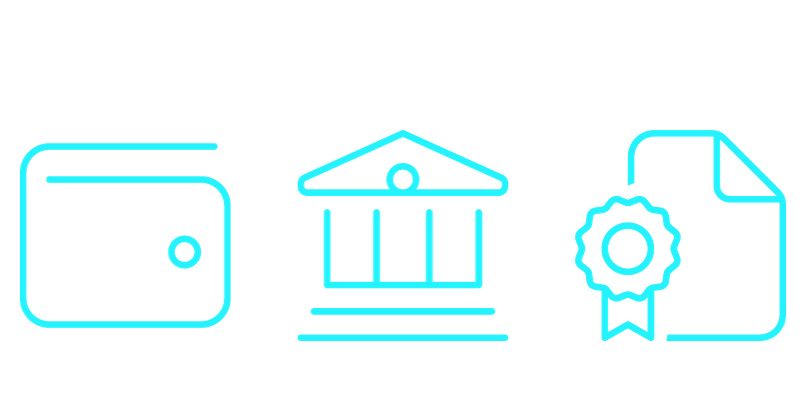Overview of tbDEX
What is tbDEX?
tbDEX is an open source liquidity and trust protocol that unlocks frictionless commerce and financial access globally.

The protocol enables participants to securely validate counterparty identity and trust, as well as desired compliance with relevant laws and regulations.
After trust establishment, tbDEX’s standard messaging protocol enables Participating Financial Institutions (PFIs) and counterparties to discover, negotiate, and confirm transactions.
Once transaction details are confirmed, participants execute and settle these transactions outside of the protocol with PFIs directly.
tbDEX is architected on Web5 infrastructure, utilizing decentralized technologies such as Decentralized Identifiers (DIDs) and Verifiable Credentials (VCs).
Why do we need tbDEX?
The web connected us all, but money and payments have not kept pace. The legacy payment system is held together with proverbial duct tape, concealing fundamental problems. Final settlement of payments is slow, expensive, and never quite final. These inefficiencies result in costly account fees or outright exclusion from the system, disproportionately affecting the economically disadvantaged.
Decentralized and trustless systems eliminate barriers to seamless online financial services such as international money movement. Yet, legacy fiat systems are projected to stay integral to our financial systems for the foreseeable future. This is why our global financial system and the customers it serves needs a smooth method to transition between fiat and digital currencies.
Put simply, tbDEX is a messaging protocol that allows for the decentralized transfer of value. This simplicity provides the opportunity to build whatever you want on top of it. tbDEX provides open and unbiased access to traditional financial services to enable everyone to participate in the world of digital currencies.
The vision for tbDEX is one where any member of our financial system can utilize the protocol to allow for portability and interoperability across currencies, nationalities, and, most importantly, people.
Furthermore, tbDEX is designed to encourage competition among financial institutions for customers' business, offering them a choice among multiple providers. This competitive landscape incentivizes PFIs to offer more reasonable transaction fees, as they vie to attract and retain users within the tbDEX ecosystem.
The integration into one protocol ensures that every wallet application has access to every participating financial institution, fostering a customer-centric environment where quality of service and cost-efficiency become key differentiators.
This is transformative for smaller companies where the challenge to integrate with all wallet applications is too high. With tbDEX, finanicial institutions can adopt the protocol once and enable thousands of wallets.
How does tbDEX work?
tbDEX is a messaging service that provides a common protocol for establishing trust and accessing liquidity.
Note that tbDEX is not an exchange, payment processor, bank, custody or self-custody wallet, or financial service provider of any kind. Instead, tbDEX is a protocol that enables efficient communication between two willing counterparties.
Actors
There are essentially three types of actors involved in a tbDEX network:

- Wallet Applications: These hold identifiers and credentials, acting as an agent to facilitate exchanges on behalf of a person seeking liquidity
- PFIs: The entities offering liquidity services on a tbDEX network
- VC Issuers: Organizations that act as sources of verifiable credentials
Messages
Using the tbDEX protocol, PFIs and Wallet Applications can exchange messages to negotiate a proposed transaction.
As part of negotiating a proposed transaction, PFIs and Wallet Applications message each other using the following tbDEX message types:
-
Request for Quote (RFQ): a request for the PFI to provide a quote specifically for the user based on the transaction they are proposing, the payment methods provided, etc. The RFQ also includes the proof of required credentials.
-
Quote: a formal offer from a PFI detailing exactly what the user will receive in exchange for a specific currency or asset, as per their RFQ. It also includes the total fees associated with the chosen payment methods, instructions for making the payment and receiving the funds, and an expiration time after which the terms of the quote are no longer guaranteed.
-
Order: an agreement to execute the proposed transaction. The parties may then settle their transaction outside of tbDEX.
-
Order Status: updates on execution of the order, sent by the PFI.
-
Close: signifies that the transaction has reached a terminal state. It can be used if the PFI is unable to provide a guaranteed quote to the RFQ, if the customer is no longer interested in the quote, if the order has failed, or if the order has completed. No messages can be added to a transaction after a Close has been sent.
Example Scenario
Alice holds a digital wallet application that securely manages her identity, including her identifiers, credentials, and authorizations for external apps and entities. Alice wants to exchange 100 units of digital currency for USD. Because Alice is off-ramping from digital currency to fiat, a PFI will likely require verification of Alice’s identity in order to fulfill their regulatory and compliance obligations.
-
Alice informs her wallet of her need to make the transaction.
-
Alice's Wallet discovers PFIs that offer this currency pairing, compares their credential requirements with the VCs Alice holds, and if necessary, applies for any missing VCs.
Related Guides
-
The Credential Issuer (if applicable) issues the required VCs to Alice, which are stored in her wallet.
Related Guides
-
Alice’s Wallet presents the offerings to Alice, allowing her to choose the one she’d like to transact with.
Related Guides
-
Alice considers various factors such as the reputation of the PFIs as well as the transaction fees before choosing a PFI.
-
Alice's Wallet creates a request for a quote (RFQ) with Alice's DID, the details of her request, and the required VC - which Alice has already obtained previously.
Related Guides
-
The PFI receives the RFQ, verifies the credentials, and responds with a quote.
Related Guides
-
Alice's Wallet accepts the quote by placing the order.
Related Guides
-
The PFI sends order statuses to the Wallet to update Alice about the order.
Related Guides
-
The PFI fulfills the order then sends a close message to Alice’s Wallet.
Related Guides
Try tbDEX
By leveraging decentralized technologies, tbDEX:
-
Offers a permissionless and inclusive platform that allows for the transfer of funds across different currency systems and borders
-
Promotes competition among PFIs, ensuring more equitable transaction fees and services for users
-
Provides tools to meet regulatory requirements, including identity verifications
As a result, tbDEX offers a versatile solution for seamless financial transactions for developers, institutions, and individuals alike. If you’re ready to build your own applications using tbDEX, check out our SDKs.
Was this page helpful?
Connect with us on Discord
Submit feedback: Open a GitHub issue
Edit this page: GitHub Repo
Contribute: Contributing Guide